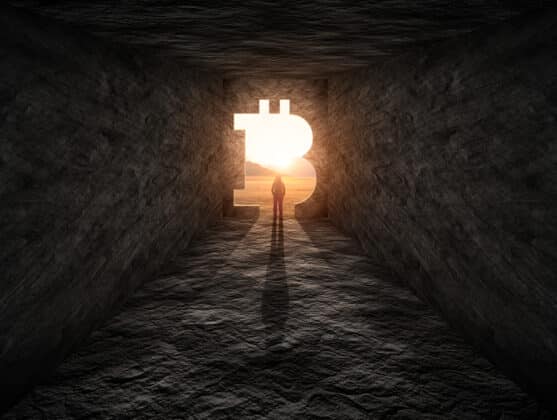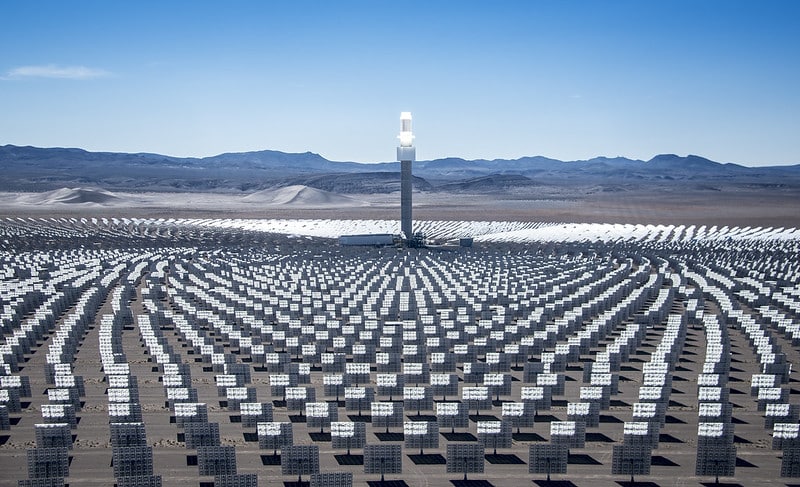Turning Digital Gold to Green: Bitcoin Mining will use more Renewables
Learn how Bitcoin mining is heading to a more eco-friendly future as miners are looking into renewable energy sources.


Welcome to another weekly news update in the crypto space.
It’s been almost three weeks since Bitcoin has experienced a major correction, with many wondering whether this is a temporary set back, and whether the legendary cryptocurrency has a future.
The short answer is, yes, Bitcoin has a future, and 2021 is going to get even more interesting for Bitcoin and perhaps also for the altcoins that were born from it.
In this news update, we argue that big plans are coming for Bitcoin. When there is rumor, there is possibly a price recovery and great buying opportunities. Please be reminded that this is not investment advice, but an educational piece.
Please read through this article, and take the time to consider before making an investment decision.
What happened in the past month?
If you feel like everything has happened way too quickly, here is an oversimplified summary:
In early May, the price of Bitcoin peaked, but failed to reach the US $60,000 mark. Afterwards, a sell-off occurred as per usual when peak prices have been reached.
The drop may have also coincided with Tesla CEO Elon Musk’s appearance on Saturday Night Live. In the show, the self-proclaimed Dogecoin fan disappointed his followers when he said that the joke cryptocurrency is just a “hustle”.
Two weeks later on 13 May, Elon Musk tweeted that Tesla will not accept bitcoin payments for Tesla products temporarily, due to environmental concerns. The price of bitcoin saw a major correction ever since, and has met resistance at the 40,700 USD level.
The apparent drama that unfolds between the tech billionaire and the trillion-dollar asset did not end there. On 25 May, Elon Musk said in a tweet that he “spoke with North American Bitcoin miners.”
What resulted from the meeting was a newly assembled “Bitcoin Mining Council” to “promote energy usage transparency and accelerate sustainability incentives worldwide” according to Michael Saylor’s tweet. Saylor is the CEO of MicroStrategy, one of the leading institutional bitcoin buyers in early 2021.
Why does Bitcoin get so much attention?
If you are well-read in the crypto space, then you know that there are so many other alternative cryptocurrencies that are making further strides to create a more sustainable and scalable decentralised network.
You can name a few — Cardano, Polkadot, Solana, VeChain, and the highly anticipated Ethereum 2.0. Even Bitcoin forks like Litecoin and Bitcoin Cash, with the security of Bitcoin, but the speed of Ethereum (1.0), are great ‘replacement’ candidates for the grandfather of all cryptocurrencies.
Regardless, Bitcoin garners the attention of many new and experienced investors because it is simple enough to understand, and the fact that it came before all cryptocurrencies has provided it the advantage of early adoption.

Bitcoin, in relation to other cryptocurrencies, isn’t as volatile since it is well established in the market, and a top-of-mind asset. Twitter CEO Jack Dorsey said that Bitcoin has been “the most resilient” compared with all cryptocurrencies.
“It’s been around for 10 years, it has a great brand,” Dorsey said. His opinion that Bitcoin would become the best native currency for the internet is backed by the fact that the currency is consensus-driven and open for the public.
Even with the existence of stablecoins, many trading platforms and exchanges commonly provide markets for Altcoin-BTC pairs. This means that the prices of altcoin sometimes make more sense when bitcoin is used as the base currency.
Learn more: Read our complete guide on Bitcoin.
Bitcoin must go green to survive
So much of the crypto space depends heavily on bitcoin’s performance and acceptance. Currently, one of the problems that plague the Bitcoin Network is the inefficient use of energy per transaction.
This condition is worsened by the Environmental, Social and Governance (ESG) movement, whereby investors are increasingly interested in companies which uphold high ethical and sustainability standards. For any business with direct or indirect links to bitcoin, this is not such great news.
“It was precipitated by the ESG [environmental, social and governance] movement and this notion, which was exacerbated by Elon Musk, that there are some real environmental problems with the mining of bitcoin. A lot of institutional buying went on pause,” Cathie Wood, CEO of Ark Invest, told Coindesk.
Statista released an unpleasant data which suggests that one bitcoin transaction uses up 800,000 times more energy when compared to a single VISA transaction as of 21 May 2021, around the time when the bitcoin price is falling.

Some proponents of bitcoin will argue that it is all the energy required to back up and secure one of the most robust (if not the most robust) networks ever created. The energy consumption of bitcoin will look pale in comparison to the amount of energy and sheer effort to back up, say, the US dollar.
There is almost an immeasurable cost to ensure that the US government that backs the dollar is in good faith — through expenses in international diplomacy, the military, and various investments.
A Cambridge report by Blandin and colleagues have compiled a survey which found that on average, 39% of proof-of-work mining (including bitcoin mining) is powered by renewable energy, particularly hydroelectric energy.
Unfortunately, this does not (and should not) nullify the fact that 70% of bitcoin mining is done in China, where cheap coal power ensures a satisfactory profit margin for crypto miners.
If traditional investors who are keen on following ESG principles were to get on board, there is a need for a ‘clean label’ bitcoin, demanding manufacturing transparency in an otherwise untraceable transaction system.
Add BTC to your portfolio: Click here to buy Bitcoin.
Bitcoin could solve the age-old problem of oversupply of energy
Energy is a commodity that cannot be stored. The most current batteries only have a limited capacity, and it already requires a substantial amount of resources to manufacture the best lithium ion batteries.
Therefore, energy supply must be met with energy demand. The risk of oversupply can range from physical damage caused by overloaded grids, to environmental impact of wasted space for energy generation, and not to mention a possible disruption to businesses when oversupply turns to an undersupply condition, when generators are deactivated or retired.
The problem is so significant that an entire financial industry, including energy trading, hinges on the inefficiency of energy production and distribution. Ironically, it is renewable energy sources that suffer the most from oversupply, because the rate of production is not consistent.
“The problem with renewable energy like solar, wind, or hydroelectric power is that they are generated in remote areas. The transmission and storage of renewable energy is the biggest roadblock to its growth,” according to Nivesh Rustgi in an article.

Ark Invest is one of the strongest to argue that bitcoin can be the best answer for the problem of renewable energy oversupply. In their report, they wrote that “a world with bitcoin is a world that, at equilibrium, generates more electricity from renewable carbon-free sources.”
Heavily invested in bitcoin by becoming a large buyer of Grayscale’s Bitcoin shares and Coinbase shares, the firm is fighting to get ‘green bitcoin production’ to become a popular project for energy farms around the world.
The imagined system to add financial ‘compensation’ to energy overproduction is actually already being tested in Norway. Cryptocurrency miners are set up near renewable energy farms.
Excess energy will not be stored in a battery, nor will they be sold for almost no profit margin. Instead, excess energy will generate bitcoin as a metaphorical battery that can “transport green energy”.
The bitcoin reward can be monetised, of course. But the impact of using excess energy for bitcoin mining transcends financial incentives; bitcoin mining secures the network after all.
Bitcoin mining (and the mining of many proof-of-work cryptos) will always occur in places where cheaper energy exists. However, when bitcoin mining takes on excess renewable energy, mining will possibly become more decentralised, secure, and ethical.
More weekly updates coming your way
Subscribe to our monthly newsletter, and visit our site every week to find the latest, most important updates, with our commentary to help you make informed decisions.
Further reading: Explore more topics on all things crypto by visiting the Easy Crypto Hub.
Share to
Stay curious and informed
Your info will be handled according to our Privacy Policy.
Make sure to follow our Twitter, Instagram, and YouTube channel to stay up-to-date with Easy Crypto!
Also, don’t forget to subscribe to our monthly newsletter to have the latest crypto insights, news, and updates delivered to our inbox.
Disclaimer: Information is current as at the date of publication. This is general information only and is not intended to be advice. Crypto is volatile, carries risk and the value can go up and down. Past performance is not an indicator of future returns. Please do your own research.
Last updated October 18, 2022





